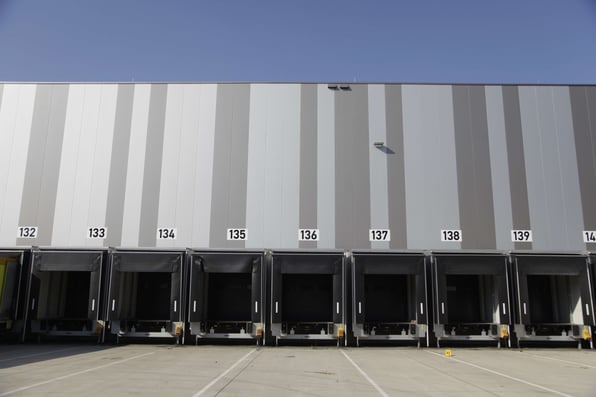2 min read
Eleven boards, nine wooden blocks, 78 nails - the components of a Euro pallet. What may not seem very spectacular at first glance has a significant impact on processes in industry, trade and logistics. Today, it is no longer possible to imagine the movement of goods without transportation aids.
For this reason, the founding fathers of the transport pallet as well as the organizations EPAL and UIC were inducted into the Logistics Hall of Fame. Arnd Stoehr, CMO / CSO, attended the ceremony at KaDeWe Berlin as a representative of METRO LOGISTICS.
Pallet pioneers inducted into Logistics Hall of Fame
The inventor of the first transport pallet, George Raymond Sr, and the founder of the CHEP pooling system, Oliver Richter, were honored posthumously in early December and inducted into the Logistics Hall of Fame as pallet pioneers. The Logistics Hall of Fame recognizes individuals internationally who have made "exceptional contributions to the advancement of logistics and supply chain management." This is particularly true of the pallet as an important step in the development of logistics. In 1939, George Raymond Sr registered a patent in the US state of New York for a hydraulic lift truck and the corresponding wooden pallet - the foundation stone had been laid for the compacted and also simpler handling of goods.
Circular economy as further development of the load carriers
The concept of pallet exchange has subsequently put the crown on the pallet principle. In the 1960s, the Australian Oliver Richter developed the closed rental pool for load carriers and introduced today's Chep system worldwide. At about the same time in Europe, the French railroad company UIC (Union Internationale des Chemins de Fer) developed the Euro pallet, the dissemination, standardization and recycling of which was then continued by EPAL, the European Pallet Association.
Euro pallet as the be-all and end-all
Today, at least on the European continent, the Euro pallet is considered the ultimate reference. The dimensions of trucks, warehouses and shelves, conveyor belts as well as cartons are aligned according to the format of the Euro pallet - 120 cm length, 80 cm width and 14.4 cm height. Because of these standardized industry norms, goods can be transported and stored stacked on pallets without wasting space - a game changer for many industries. There are currently around 625 million Euro pallets in circulation, making the EPAL pooling system the largest in the world.
"It was a special honor for me to be present at the ceremonial induction of the pallet pioneers into the Logistics Hall of Fame and to represent METRO LOGISTICS at this special tribute," says Arnd Stoehr, CMO / CSO METRO LOGISTICS, describing his impressions of the event. "Every day, thousands of pallets come in and out of our nine logistics centers as a matter of course; people take the pallet and other load carriers for granted. Yet logistics would function quite differently without them and also without their pooling."



